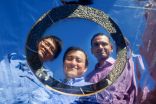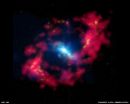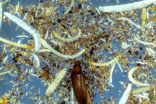(Press-News.org) A popular indigestion medication can increase survival in colorectal cancer, according to research published in ecancermedicalscience. But in fact, scientists have studied this for years - and a group of cancer advocates want to know why this research isn't more widely used.
"Cimetidine is an interesting drug as it's very safe, very well-known, and has clinical results in cancer that have been confirmed in a number of trials," says Pan Pantziarka, lead author of the paper and member of the Repurposing Drugs in Oncology (ReDO) project.
Cimetidine treats indigestion by blocking histamine receptors in the gut, which decreases the production of gastric acid. It also appears to block histamine receptors in cancer cells, as well as supporting the immune system's defences against cancer.
Cimetidine has been shown to have positive effects in colorectal and gastric cancer, melanoma, and renal cell carcinoma.
"Cimetidine is one of the most interesting examples of repurposed drugs in oncology - a drug with an extensive history of pre-clinical and clinical evidence of efficacy in a range of different cancers and with multiple mechanisms of action at work," says Pantziarka.
Raising awareness of untapped medicines
An international collaboration between anticancer researchers from across the world, the ReDO project is dedicated to promoting the cause of common medicines which may represent an untapped source of novel therapies for cancer.
In a previous paper published in ecancermedicalscience, the ReDO researchers examined the anti-cancer properties of the drug mebendazole, an over-the-counter treatment currently used for threadworm.
Now, working in partnership with ecancer, the ReDO project is publishing a series of papers on drugs with enough evidence to be taken to clinical trials. Future papers will address the potential anti-cancer uses of nitroglycerin (used to treat angina), itraconazole (a common anti-fungal), diclofenac (an over-the-counter painkiller), and clarithromycin (an antibiotic).
"Such promising therapies are often ignored since pharmaceutical companies lack financial incentives to develop them further via proper clinical trials," says Gauthier Bouche, medical director of Anticancer Fund. "The ReDO project was established to find and document such opportunities."
A cheaper solution to the cancer crisis
Repurposed anticancer drugs such as aspirin and antacids may represent the future of cancer drug research, according to leaders of the ReDO project.
Cheap, accessible, and with few side-effects, these solutions are very attractive to healthcare professionals in low- and middle-income countries. Repurposed drugs could also reduce the financial burden of cancer in developed countries.
"Cimetidine is a drug that can meet patient needs now - so we need to ask ourselves: what's stopping it being used?" asks Pantziarka.
INFORMATION:
Stanford engineers have invented a revolutionary coating material that can help cool buildings, even on sunny days, by radiating heat away from the buildings and sending it directly into space.
A team led by electrical engineering Professor Shanhui Fan and research associate Aaswath Raman reported this energy-saving breakthrough in the journal Nature.
The heart of the invention is an ultrathin, multilayered material that deals with light, both invisible and visible, in a new way.
Invisible light in the form of infrared radiation is one of the ways that all objects ...
A team of scientists, led by Dr Sebastian Hoenig from the University of Southampton, have developed a new way of measuring precise distances to galaxies tens of millions of light years away, using the W. M. Keck Observatory near the summit of Mauna Kea in Hawaii.
The method is similar to what land surveyors use on earth, by measuring the physical and angular, or 'apparent', size of a standard ruler in the galaxy, to calibrate the distance from this information.
The research, which is published in the journal Nature, was used to identify the accurate distance of the ...
One of the major problems in astronomy is measuring very large distances in the universe. The current most common methods measure relative distances, but now research from the Niels Bohr Institute demonstrates that precise distances can be measured using supermassive black holes. The results are published in the scientific journal, Nature.
The active galaxy NGC 4151 called the, 'Eye of Sauron' due to its similarity to the eye in the film Lord of the Rings, is a modest spiral galaxy. It has a supermassive black hole at its centre and this black hole is still active, that ...
BOSTON - A promising experimental immunotherapy drug works best in patients whose immune defenses initially rally to attack the cancer but then are stymied by a molecular brake that shuts down the response, according to a new study led by researchers at Dana-Farber Cancer Institute and the Yale University School of Medicine.
The antibody drug, known as MPDL3280A, inhibits the brake protein, PD-L1, reviving the response by immune killer T cells, which target and destroy the cancer cells. In recent clinical trials, the PD-L1 checkpoint blocker caused impressive shrinkage ...
MADISON, Wis. -- It was fishermen off the coast of Peru who first recognized the anomaly, hundreds of years ago. Every so often, their usually cold, nutrient-rich water would turn warm and the fish they depended on would disappear. Then there was the ceaseless rain.
They called it "El Nino," The Boy -- or Christmas Boy -- because of its timing near the holiday each time it returned, every three to seven years.
El Nino is not a contemporary phenomenon; it's long been the Earth's dominant source of year-to-year climate fluctuation. But as the climate warms and the feedbacks ...
A new study has pulled together research into the most diverse place on earth to demonstrate how the organisms below-ground could hold the key to understanding how the worlds ecosystems function and how they are responding to climate change.
Published in Nature, the paper by Professor Richard Bardgett from The University of Manchester and Professor Wim van der Putten of the Netherlands Institute of Ecology, brings together new knowledge on this previously neglected area. The paper not only highlights the sheer diversity of life that lives below-ground, but also how rapid ...
Scientists from Queen Mary University of London have made a breakthrough in developing a new therapy for advanced bladder cancer - for which there have been no major treatment advances in the past 30 years.
Published today in Nature, the study examined an antibody (MPDL3280A) which blocks a protein (PD-L1) thought to help cancer cells evade immune detection.
In a phase one, multi-centre international clinical trial, 68 patients with advanced bladder cancer (who had failed all other standard treatments such as chemotherapy) received MPDL3280A, a cancer immunotherapy ...
In the race to find materials of ever increasing thinness, surface area and conductivity to make better performing battery electrodes, a lump of clay might have just taken the lead. Materials scientists from Drexel University's College of Engineering invented the clay, which is both highly conductive and can easily be molded into a variety of shapes and sizes. It represents a turn away from the rather complicated and costly processing--currently used to make materials for lithium-ion batteries and supercapacitors--and toward one that looks a bit like rolling out cookie ...
A team led by the University of Colorado Boulder has discovered an invisible shield some 7,200 miles above Earth that blocks so-called "killer electrons," which whip around the planet at near-light speed and have been known to threaten astronauts, fry satellites and degrade space systems during intense solar storms.
The barrier to the particle motion was discovered in the Van Allen radiation belts, two doughnut-shaped rings above Earth that are filled with high-energy electrons and protons, said Distinguished Professor Daniel Baker, director of CU-Boulder's Laboratory ...
In the near future, physicians may treat some cancer patients with personalized vaccines that spur their immune systems to attack malignant tumors. New research led by scientists at Washington University School of Medicine in St. Louis has brought the approach one step closer to reality.
Like flu vaccines, cancer vaccines in development are designed to alert the immune system to be on the lookout for dangerous invaders. But instead of preparing the immune system for potential pathogen attacks, the vaccines will help key immune cells recognize the unique features of cancer ...







